Glamour Gab Of Hollywood
I’ve certainly been “roughing” it this month. I had to spend several weeks in Paris, in one of those Parisian hotels where your bedroom leads on to a balcony that overlooks the glittering city; I had to eat those fabulous French meals; and, everywhere I went I saw people such as Ingrid Bergman, Audrey Hepburn, Ava Gardner, Gina Lollobrigida, Fred Astaire, and Anthony Quinn.
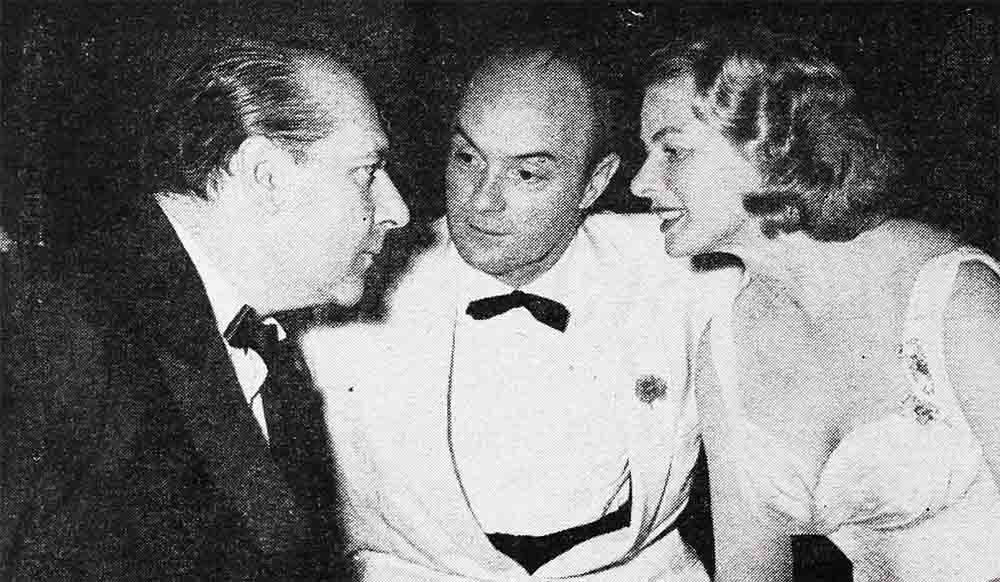
Ingrid—Has It Been Worth It?
Let’s take Ingrid Bergman first, for there’s one question every woman must want to ask her—but which can’t be asked of her, if you have any heart. Question: Has the price she paid for Rossellini’s love been worth it?
My answer, based on my observations of this beautiful woman: I’m sure it’s been worth it—for two reasons.
Here’s one of them. The first night I was in Paris, Anatole Litvak, director of “Anastasia,” asked me to a cocktail party. There were only about twenty guests, just the cast and crew of “Anastasia,” including Ingrid, Yul Brynner, and Akim Tamiroff.
I had not seen Ingrid for more than six years. With the exception of Greg Bautzer, her lawyer, few people in Hollywood have. So it was magical to look at her, against the red plush antiquity of a little Paris bistro, glowing like a white diamond. As always, she was dressed with the utmost simplicity, her golden hair drawn simply back, with no make-up except lipstick on her lovely face.
In the old Hollywood days, Ingrid used to be shy and reserved, around women at least. Now she bubbles over with talk and laughter. She told me about her son, of whom she is most proud, and about her twin daughters. She spoke about the Italians whom she thinks know more about the sheer zest of living than any other race. She spoke about the theatre, for which she has developed a great enthusiasm. That night, in fact, she was planning to see a stage production of “War and Peace,” performed by some Germans. She told me that Rossellini was joining her the next night in Paris, bringing their children with him.
Throughout the party, Ingrid was laughing, radiant, no longer a woman on guard, as she always seemed to be in Hollywood.
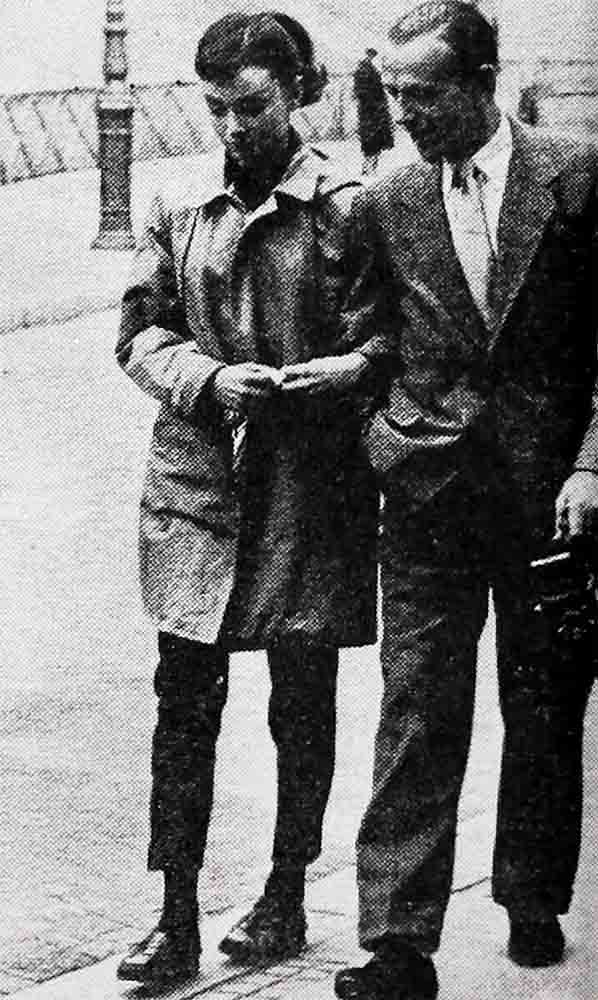
On Location In Paris
The next night, on location for the first scene of “Anastasia,” it poured rain. The scene was being shot on the beautiful Pont Alexandre III, which bridges the Seine. The rain actually helped the plot, since the scene pictured the lonely Princess Anastasia being saved from suicide by the character portrayed by Yul Brynner.
Ingrid stood halfway across the bridge, where she would first be “discovered” by the camera. Brynner waited farther down, in a car. The rain kept falling and the atmosphere became more miserable, but Bergman’s warmth seemed to radiate more and more. It was obvious that she was deeply happy, almost ecstatic, over being in such an important picture.
During all this, carefully outside camera range, Rossellini stood leaning against a light pole. Nobody seemed to be aware of him, except me. I couldn’t help wondering how Rossellini felt—he who was the great man when he married Ingrid; he who was supposed to be the Italian film-making genius; he the great lover, the dominant male. Maybe the question that you can’t ask Ingrid should really be directed to Rossellini. Has it been worth it? What do you think his reply would be?
Whereas the day-after-day rain in Paris didn’t interfere with the “Anastasia” shooting, it forced the “Funny Face” company to devise scenes that weren’t in the script. One day, out at Chantilly, a Paris suburb, Audrey Hepburn and Fred Astaire were supposed to play a love scene beside a small lake. The lake is on the grounds of the Chateau of the White Queen. Walking among the gardens, wearing a Givench gown, with the rain beating the fragrant blossoms into the ground, Audrey looked like a princess.
After an hour in the rain, the company had to give in to the elements. It Ay was decided to revise the scene and shoot it in Paris in front of the Louvre. Fred Astaire, as the demon young (!) photographer, was to be photographing his model, Audrey, holding a big bunch of balloons.
Audrey and Fred went through their camera paces in the best good humor, despite the downpour. Fred, incidentally, says that all he wants is work and more work, because this is the only way he can briefly forget his grief over the loss of his wife.
The light of the dark day began failing, however, before the shooting could be finished. So the call went out for the same place the next morning. As luck would have it, the next morning, the sun blazed out. Audrey and Fred stood in the same spot—but under artificial shadows, dripping beneath the raindrops splashed on them by hoses from every angle.
While in Chantilly the day before, we stopped for lunch at a little restaurant. Such a time Audrey and Mel Ferrer had, each making sure that the other was eating. Mel thinks Audrey doesn’t eat enough and she’s sure he doesn’t. So there they sit, so bemused with taking care of one another that neither eats barely a bite. It is enchanting to see a couple so completely lost in each other as these two are in the second year of their marriage.
Designing Men
All this movie-making in Paris has presented the first challenge to our top Hollywood dress designers, Edith Head and Helen Rose. Until now, they have been supreme, but for “The Little Hut,” Ava Gardner had no less than fourteen outfits made by Dior, while Audrey Hepburn had all her things for “Funny Face” made by Givenchy—and none other than Balenciaga designed the middy blouse and skirt that Ingrid Bergman wears in “Anastasia.”
I saw the sketches of Dior’s designs for Ava, and they are unbelievably beautiful, chic and breathtaking. They are so lovely that Ava agreed to make “The Little Hut” largely because of them—although the script is a dilly and playing opposite Stewart Granger and David Niven isn’t painful, either. As for Givenchy’s creations for Audrey Hepburn, I think they’re a crime. Although Audrey’s beauty and sweetness still stand out, Givenchy’s angularity tries to make women look like yardsticks, long and flat. His may be the last word in chic, but to me it is not the first syllable in allure.

Curves, Cash and Conquest
On the set of “Notre Dame de Paris,” which is a re-make of “The Hunchback of Notre Dame,” I saw Gina Lollobrigida in a piece of burlap that covered her from neck to toe, but still didn’t conceal her curves. They could lower this dazzler into a pitch-black mine at midnight and you’d still know she wasn’t a boy.
Last year in Paris, when Gina was making “Trapeze,” I found her very reserved and most formal. But this year, as she capered about between shots, I decided she had either been shy before or had learned that on the set of an American-made picture you become very friendly. I believe it’s a bit of both, but mostly the latter. Because here is a tearing beauty with a tremendous brain. As Robert Hakim, who is producing “Notre Dame de Paris,” said, “U.S. Steel should be as well run a corporation as is the corporation of Lollobrigida.”
Gina’s corporation is run by Gina and her husband, Dr. Milko Skofic. Here is a couple, quietly but completely in love, who understand each other absolutely. Already, from their 50% ownership of “The Most Beautiful Woman in the World,” they are secure for life. And Gina is a mere twenty-eight.
After spending seven hours a day shooting “Notre Dame de Paris” in two languages that are foreign to her—French and English—Gina spent two more hours a day on singing lessons and three hours on ballet. There’s no stopping people like that, when they have talent, too. Gina’s got it, in every sense. I think she’s terrific.
Return of the Hunchback
Anthony Quinn is the hunchback in the film with Gina. His make-up for the picture is so fantastic that it took three hours every morning to get it on and two hours to get it off. He had lead soles on his shoes to make him walk heavily, a brace around his body to pull him out of shape, a twenty-five-pound “hump” on his back, and one of his eyes was blacked-out with putty.
Since the French shooting day runs from 12:30 to 7 p.m., Tony got to the studio at 9:30 a.m. and left at nine in the evening. During the on-and-off make-up sessions, he, too, studied French. He had to, since the picture was made in French and English. On Saturdays and Sundays, Tony studied painting with two different instructors. He let me see a few of his landscapes and they really are knockouts.
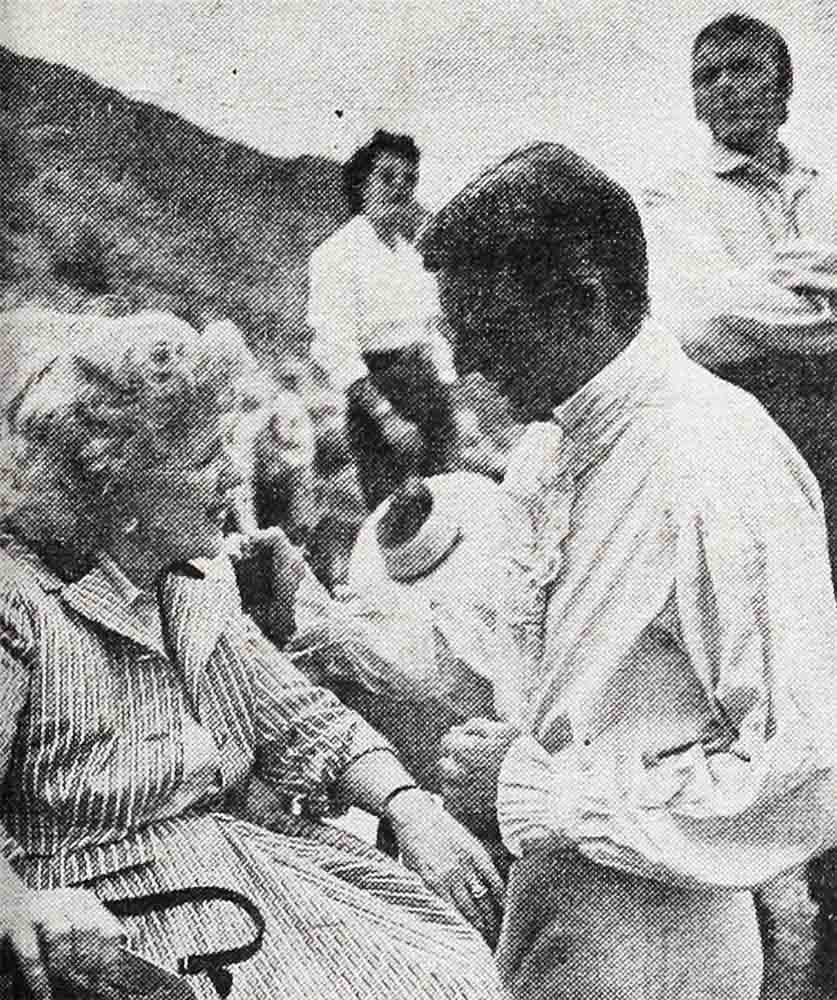
On Location in Spain
In Madrid, where “The Pride and the Passion,” starring Cary Grant, Frank Sinatra and Sophia Loren, was being filmed, the mere presence of Her Serene Highness, Princess Grace of Monaco, stole the show from the other stars.
With her usual effortlessness, the ex-Miss Kelly captured all Madrid just by being her flawless super-self. I saw it happen at a bull fight on my first weekend in the capital of Spain.
Sophia Loren is the greatest star in Europe today—even more so than Gina Lollobrigida, although I think Gina will stay on top longer. Sophia deserves to be a star. She is a spectacular beauty, with naturally curly gold-red hair, large topaz eyes and a luscious mouth. She is five-feet nine with a 23-inch waist and 38 bust and hips. She will be twenty-two in September.
Before the camera, Sophia is a sensitive, stormy actress. Cary Grant told me he believes that, now she has been signed to a contract with Paramount, she can become one of the greatest of stars. Stanley Kramer, producer-director of “The Pride and the Passion,” echoed Cary’s sentiments.
I believe Sophia will be great in American pictures, because she has the qualities always sought in stars. She has the same warm, friendly playfulness Lana Turner had when she first started in movies, that Marilyn Monroe now has. She has the same overwhelming sex appeal that was the young Joan Crawford’s, unbelievably combined with the sweetness of an Ann Blyth. And she has the most melodious laugh you ever heard.
Nevertheless, at the bull fight in Madrid, Princess Grace was awarded all the bulls’ ears, which is the highest of honors in this strange sport.
The presence of two such luminaries at a bull fight was enough to throw all Madrid into a tizzy, anyhow. But unspoiled Sophia had made the mistake of sitting in a box with her publicity man, while Her Serene Highness was—in a Latin country like Spain—not only accompanied by her husband, but one who is a reigning prince. A girl who has achieved such eminence deserves the bulls’ ears.
In Spain, delays are as common as castanets, and Frank Sinatra fussed and fumed over every one of them. But Cary Grant had a wonderful time with his wife, Betsy. Cary has a bubbling enthusiasm for Spain, the Spaniards, the food, the light wines. And, anyhow, he’s a lover of life.
Thus, when I drove some thirty miles outside Madrid to El Escorial, the vast monastery built by Philippe II in 1562, I found Cary laughing in the sun. Some of the scenes in “The Pride and the Passion” were shot in this architectural wonder. On that particular morning, they had been shooting down among the tombs, where all but three of the kings of Spain are buried. A guide, with a group of tourists, had come along between shots, explaining the sights. He pointed to the left and said, “Here are Carlos V and the three Philippes.” He pointed right and said, “Here are Ferdinand and Isabella.” Then he looked in the center and said, “And here is Mr. Grant.”
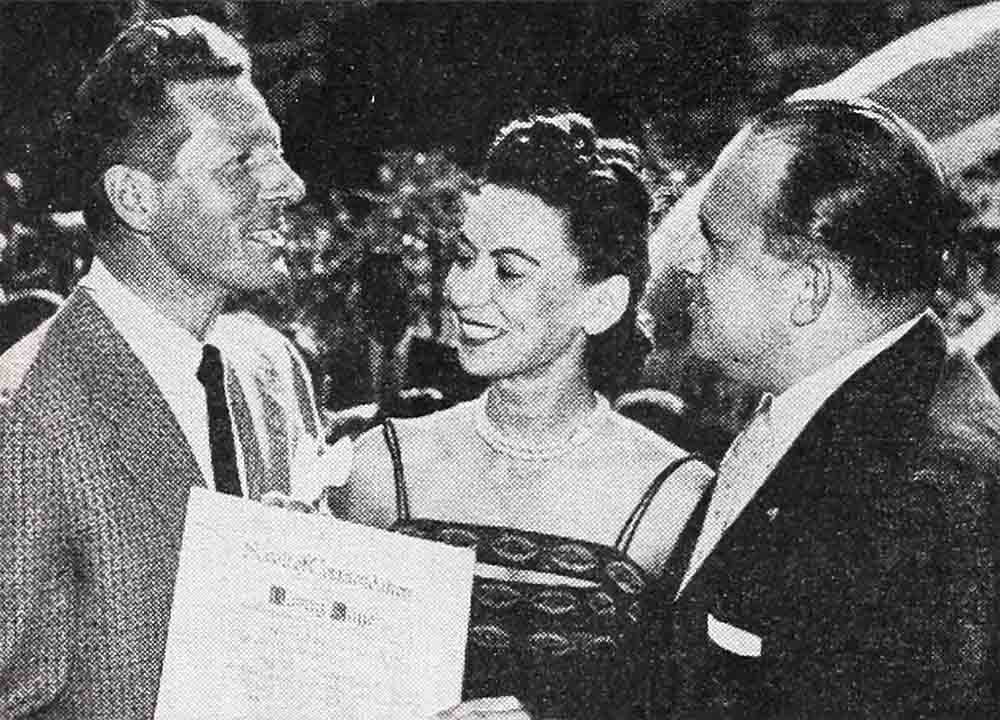
Banked Fires?
Frank Sinatra and Ava Gardner ran into each other at an elegant Madrid restaurant called The Commodore and disappointed everyone by not being the least bit dramatic about it. Each was with a different party of friends and they both greeted each other with just the right note of pleased politeness, neither too cordial nor too cool. If they ever saw each other alone in Spain, there’s no proving it. There’s no proving anything about Ava in Madrid, anyway. She lives in a house far out in the country, and the beat of flamenco music and dancing is usually heard there all night. During the day, she is completely invisible.
Danny Dood It
It was Danny Kaye, in Spain with his UNESCO film on children, who really shocked the Madrelanos, as the citizens of Madrid are called. Although Danny has worked eagerly and tirelessly for UNESCO, the Madrelanos couldn’t excuse his air of extreme informality. They are such formal people, they even wear gloves when going to market, and they were deeply offended by Mr. Kaye when he turned up for an audience with General Franco. Danny was wearing sandals, a sport coat and sport shirt with no tie, and was in need of a haircut.
Franco kept him waiting for three hours—which cooling off period the Madrelanos felt Danny richly deserved.
THE END
It is a quote. PHOTOPLAY MAGAZINE SEPTEMBER 1956


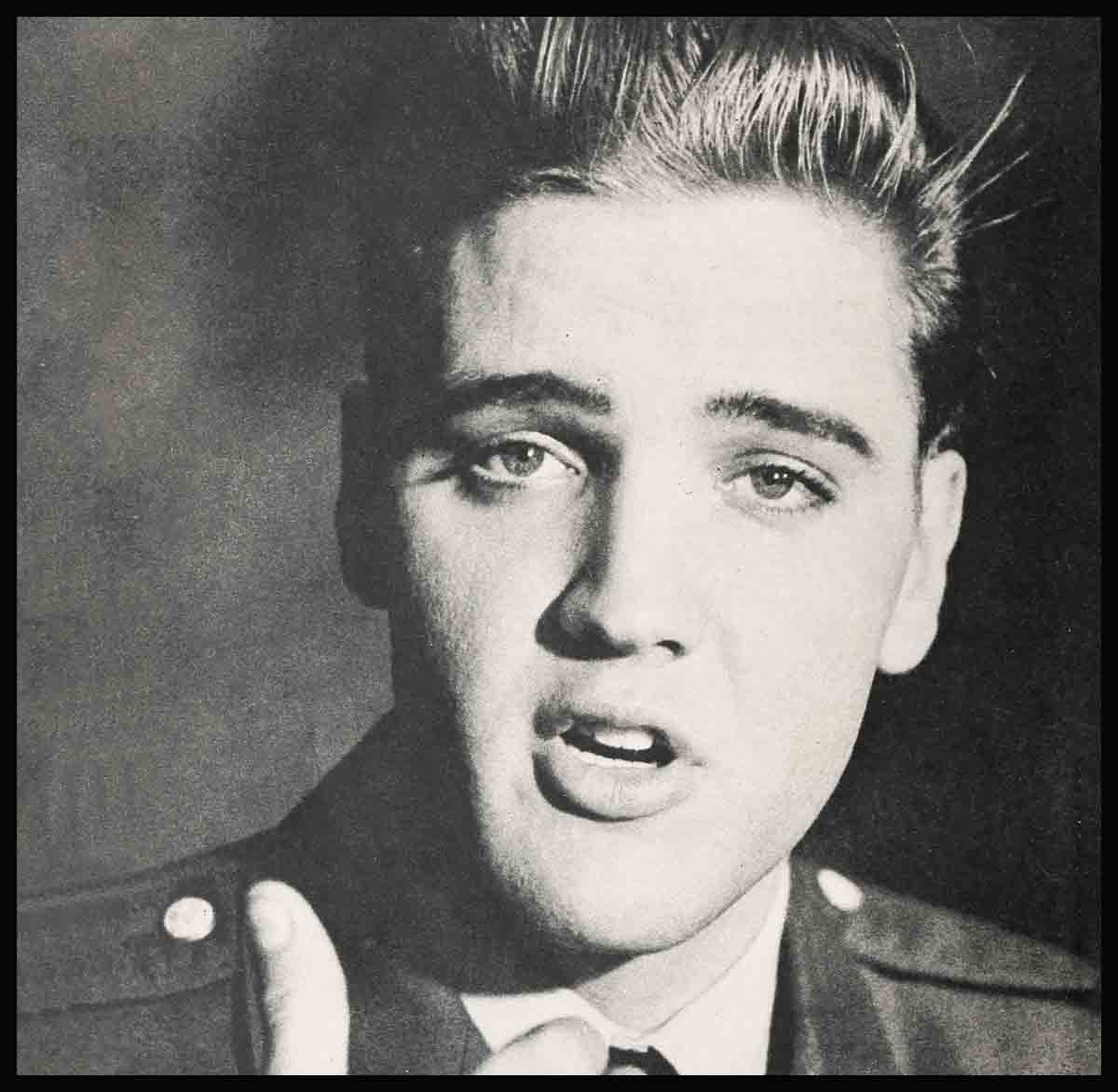

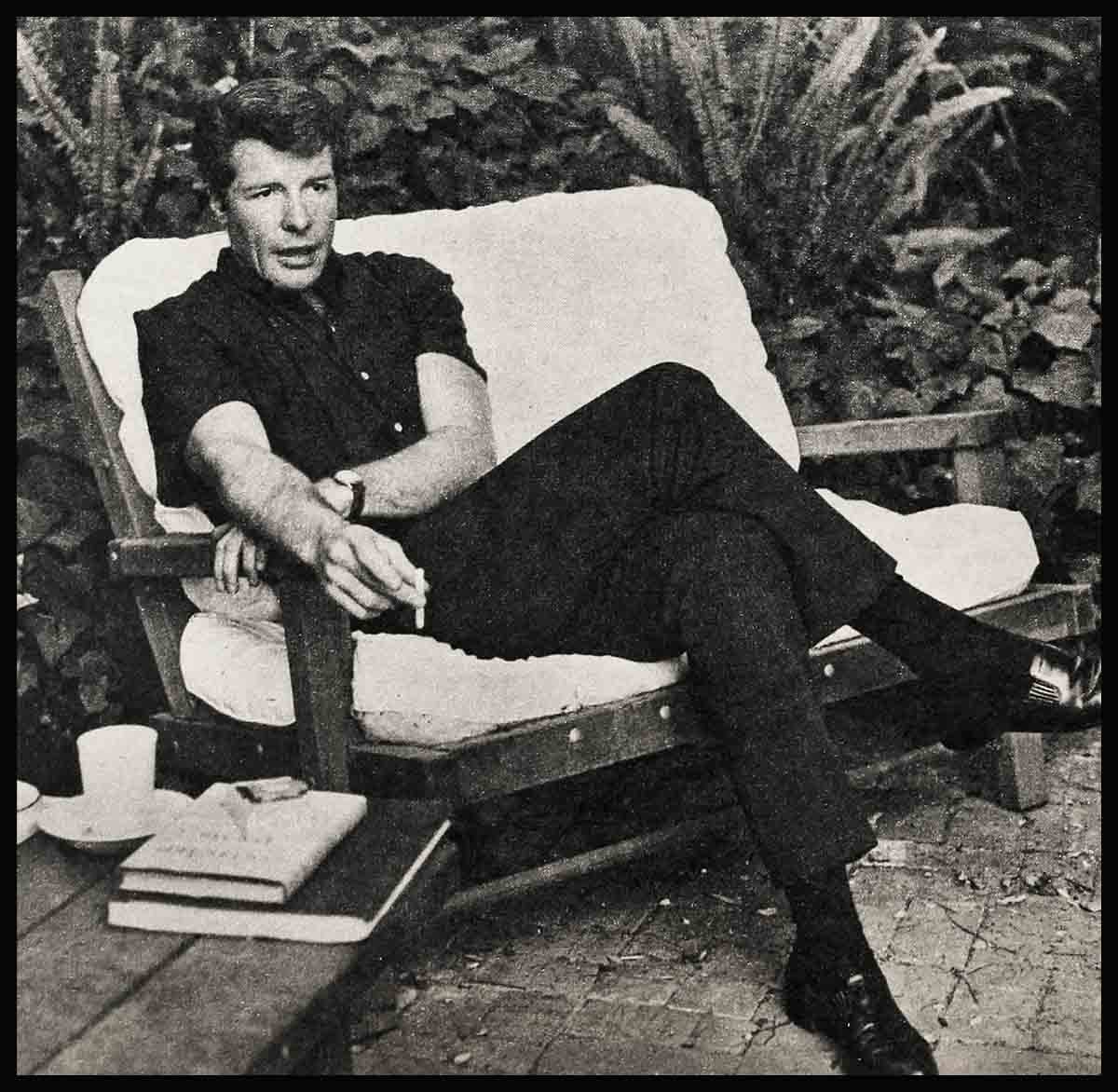
zoritoler imol
21 Nisan 2023Great goods from you, man. I’ve understand your stuff prior to and you are simply extremely excellent. I actually like what you’ve bought right here, certainly like what you’re saying and the way through which you assert it. You are making it enjoyable and you still take care of to stay it smart. I cant wait to read far more from you. That is really a tremendous website.